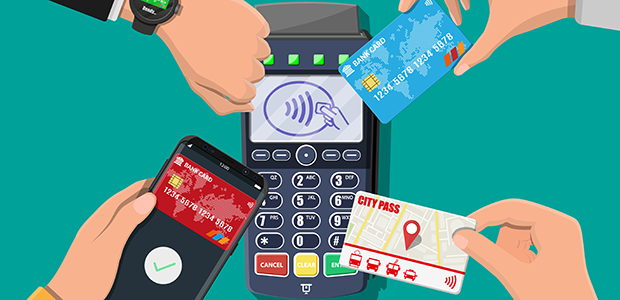
How should businesses be taking payments in 2022?
2022 has been broadly embraced as a year of recovery for UK businesses. COVID restrictions have been completely lifted, and with the vaccine rollout marked a success, it seems unlikely that any further restrictions will be enforced in the near future. Customers are ready to spend, but is your business ready to take their payments?
The payments industry has changed almost beyond recognition in the last decade. The rise of digital payments and the fears of the pandemic has opened the door to an almost-cashless society. This, combined with small businesses struggling with late payments from customers, fraudulent activity constantly lurking, and chargebacks threatening further money being taken, it’s important to choose the right payment system for you and your customers.
So, what do you need to know to ensure that you’re prepared to take payments in the best way for you and your customers to have a successful 2022?
What do small businesses need to know about payments for 2022?
What are the contemporary cashless payment options for small businesses?
- Credit and debit cards – The only new thing about credit and debit card payment is the ability for small businesses to accept this form of payment. Payment terminals and card readers have become more accessible in recent years and can provide a useful solution to businesses that work in a single location, but they can still be quite expensive, and sometimes lack flexibility. In addition to longer wait times for you to receive your payments from your customers, credit and debit cards are also more vulnerable to fraud as they can easily be stolen.
- Digital wallets – Many providers now offer a digital wallet service, from Apple Wallet to Google Pay. Providing authentication and data encryption to protect customer personal information, digital wallets allow users to pay via their smartphones. Right now, this relies upon the business having a POS system to accept payment, but with the surge in this type of payment, this may change in the near future.
- Bank transfer (ACH/DD) – Payment via bank transfer is suitable for many forms of transaction. Particularly where there may be an ongoing business relationship. However, for many traders, it can be risky and is reliant upon the honesty of the customer. It’s also easy for money to go missing with inaccurate account details being entered and can be time-consuming.
- Electronic payment apps – PayPal was the first big business in this area, and is still the best-known. Ground-breaking at the time of launch, it facilitates what has now become the commonplace act of the digital transference of money. It’s usually quite quick, it can be relatively simple, however fees are always involved.
- Pay by Bank App – The newest of all payment methods is the Pay by Bank App. This system works through your mobile phone and the app allows the processing of credit and debit card payments, as well as instant bank transfers, without needing to log into your online bank account. This method largely limits fraud and chargebacks from customers as the payment processor is liable for payments being made. Payments are also received almost-instantly so you can rely on those important quick payments to use the money to grow your business. Pay by Bank app is just a low fixed fee and payment can be taken anywhere at any time, even when there is no internet connection available. So, you can do business whenever you need to.
What should you look for from your payment solutions?
While convenience to the customer is always a priority for any business in regards to payment, you also need to look for solutions that work for you and reduce your payment stress. Rather than trying to integrate multiple systems, consider a payment service that combines all of your needs in one place. Not just the ability to accept payments from clients, but to track your employee payments, manage your invoices, and keep track of your accounts. And don’t forget to research fees, so that you can gain the most cost-effective solution for your business.
The payments industry is in a state of rapid evolution right now. Customers are wanting more. And providers are searching for new ways to deliver it. Understanding the different types of digital payment, and how they can work for your business and your customers is a step towards a successful post-pandemic recovery, and a prosperous 2022.


